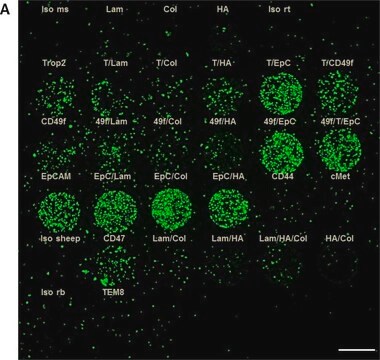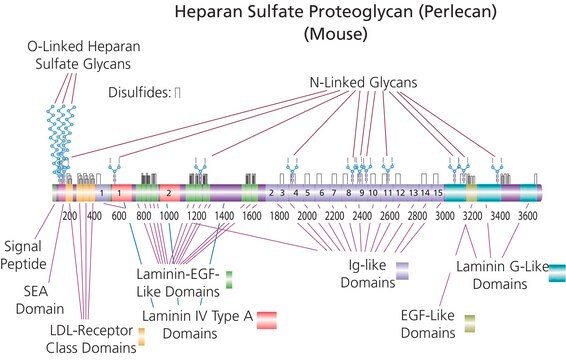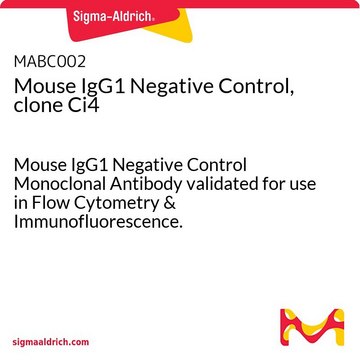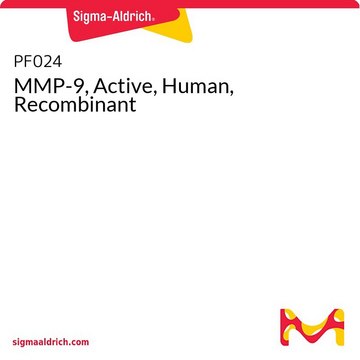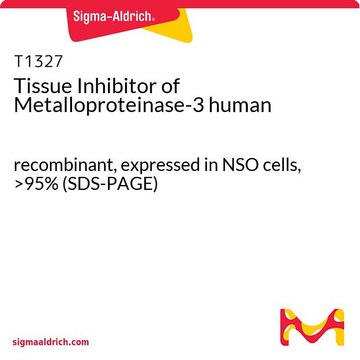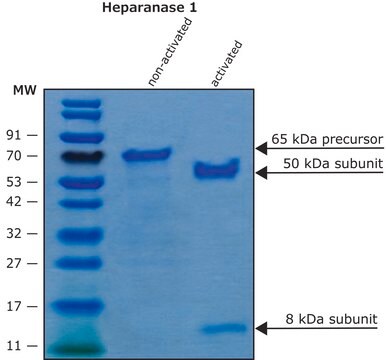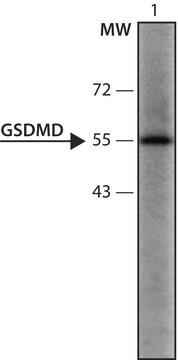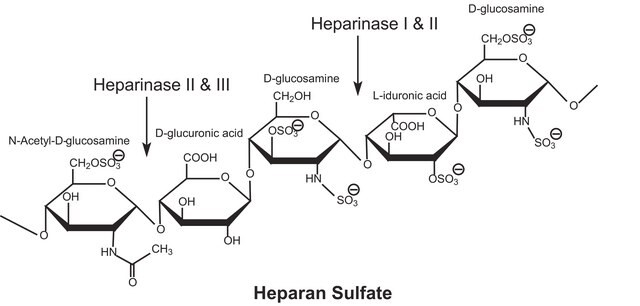MABT333
Anti-CD167a/DDR1 Antibody, clone 5D5
clone 5D5, from mouse
Sinonimo/i:
Epithelial discoidin domain-containing receptor 1, CD167 antigen-like family member A, CD167a, Cell adhesion kinase, Discoidin receptor tyrosine kinase, Epithelial discoidin domain receptor 1, HGK2, Mammary carcinoma kinase 10, MCK-10, Protein-tyrosine k
About This Item
Prodotti consigliati
Origine biologica
mouse
Livello qualitativo
Forma dell’anticorpo
purified antibody
Tipo di anticorpo
primary antibodies
Clone
5D5, monoclonal
Reattività contro le specie
human
tecniche
flow cytometry: suitable
immunocytochemistry: suitable
Isotipo
IgG1κ
N° accesso NCBI
N° accesso UniProt
Condizioni di spedizione
ambient
modifica post-traduzionali bersaglio
unmodified
Informazioni sul gene
human ... DDR1(780)
Descrizione generale
Specificità
Immunogeno
Applicazioni
ELISA Analysis: A representative lot bound immobilized recombinant human DDR1b extracellular domain (Kd ~2 nM) without affinity toward DDR2 extracellular domain or DDR1b membrane-distal DS domain containing the collagen-binding site (Carafoli, F., et al. (2012). Structure. 20(4):688-697).
Flow Cytometry Analysis: A representative lot detected the exogenously expressed DDR1b wild-type and mutant constructs on the surface of transfected HEK293 cells (Carafoli, F., et al. (2012). Structure. 20(4):688-697).
Neutralizing Analysis: A representative lot inhibited collagen-induced autophosphorylation of DDR1b exogenously expressed on the surface of transfected HEK293 cells (Carafoli, F., et al. (2012). Structure. 20(4):688-697).
Cell Structure
Qualità
Flow Cytometry Analysis: 0.1 µg of this antibody detected CD167a/DDR1 on the surface of one million 2% paraformaldehyde-fixed T47D human breast cancer cells.
Descrizione del bersaglio
Stato fisico
Stoccaggio e stabilità
Handling Recommendations: Upon receipt and prior to removing the cap, centrifuge the vial and gently mix the solution. Aliquot into microcentrifuge tubes and store at -20°C. Avoid repeated freeze/thaw cycles, which may damage IgG and affect product performance.
Altre note
Esclusione di responsabilità
Non trovi il prodotto giusto?
Prova il nostro Motore di ricerca dei prodotti.
Codice della classe di stoccaggio
12 - Non Combustible Liquids
Classe di pericolosità dell'acqua (WGK)
WGK 2
Punto d’infiammabilità (°F)
Not applicable
Punto d’infiammabilità (°C)
Not applicable
Certificati d'analisi (COA)
Cerca il Certificati d'analisi (COA) digitando il numero di lotto/batch corrispondente. I numeri di lotto o di batch sono stampati sull'etichetta dei prodotti dopo la parola ‘Lotto’ o ‘Batch’.
Possiedi già questo prodotto?
I documenti relativi ai prodotti acquistati recentemente sono disponibili nell’Archivio dei documenti.
Il team dei nostri ricercatori vanta grande esperienza in tutte le aree della ricerca quali Life Science, scienza dei materiali, sintesi chimica, cromatografia, discipline analitiche, ecc..
Contatta l'Assistenza Tecnica.